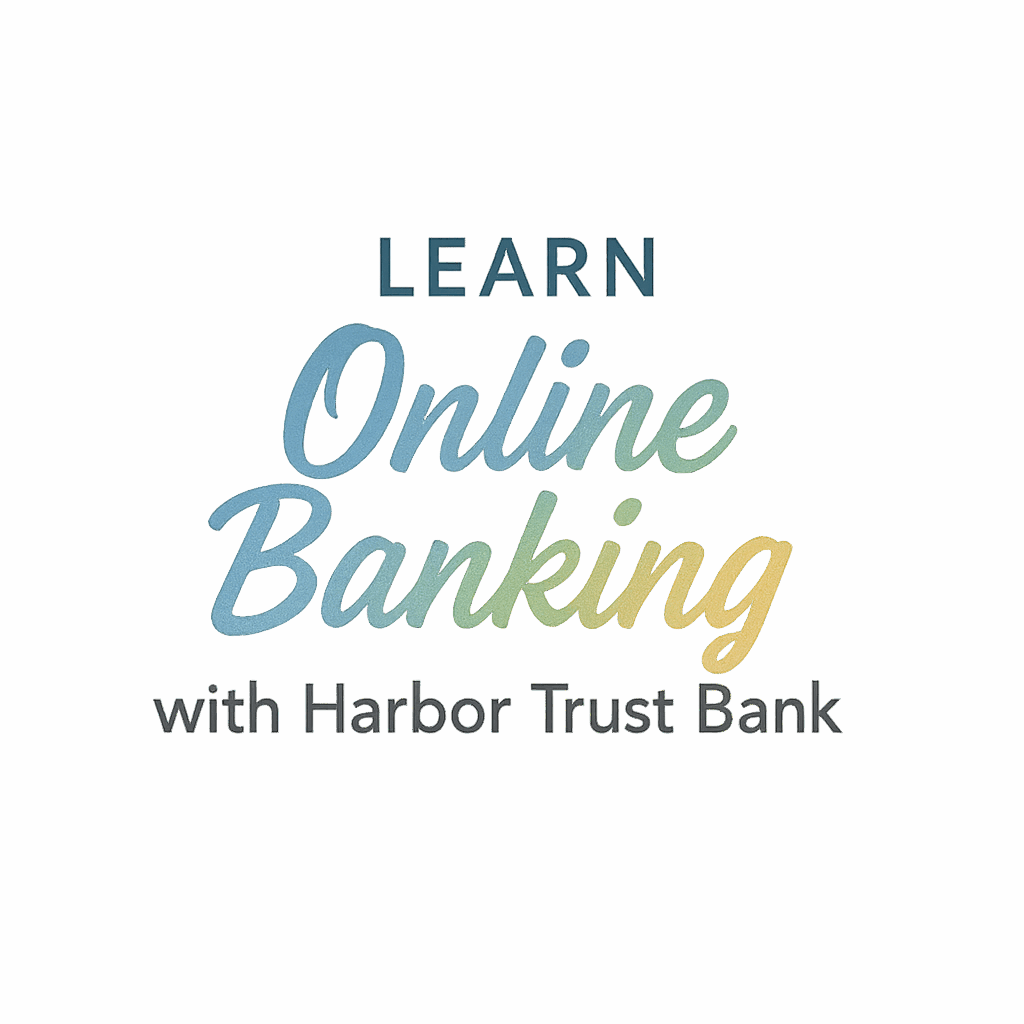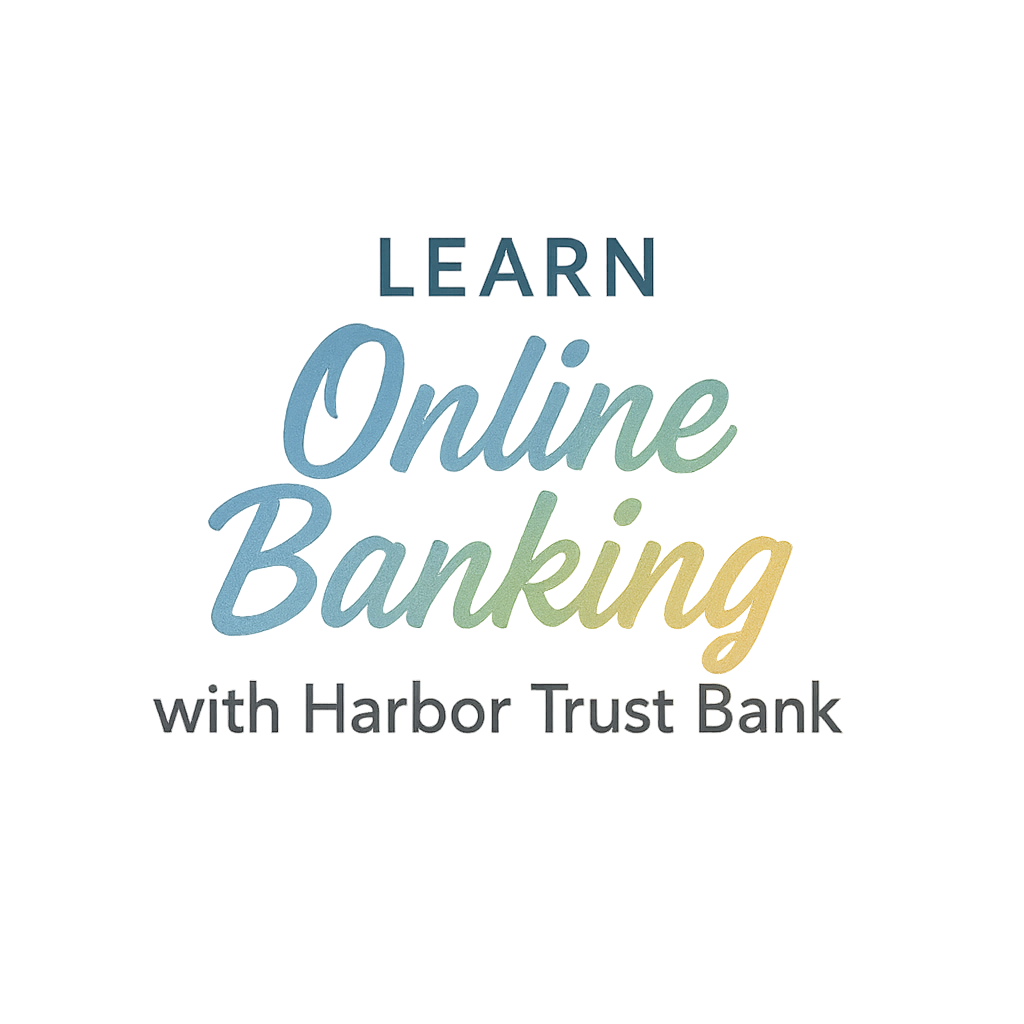Introduction: Is Online Banking Safe for Teens?
Let’s be honest—handing a teen a debit card and letting them loose on a banking app might sound a little nerve-wracking. But here’s the good news: online banking is safe for teens, and it’s safer than ever thanks to smart design, high-level security, and family-friendly features built right in.
If you’re a parent on the fence or a teen wondering if you’re ready, this post breaks down 8 clear reasons why online banking is a safe and smart step for teens today.
1. Parental Controls Keep Teens Accountable
How Banks Empower Parents with Monitoring Tools
One of the most underrated features of online banking for teens is the ability for parents to monitor activity in real time. With parental access, you can see every transaction as it happens—no surprises when that third milk tea hits the bank account.
Platforms like Harbor Trust Bank offer shared viewing options, letting parents guide financial behavior without hovering too close.
Teaching Teens Financial Responsibility
Think of online banking as training wheels for money management. Teens can check their balances, track spending, and even start saving—all while knowing Mom or Dad is just a click away. This not only makes banking safer, but it also teaches lifelong financial skills in a low-risk environment.
Explore more on Harbor Trust Bank’s tips and tricks section for guidance on setting boundaries and empowering teens financially.
2. Advanced Security Features Protect Every Login
Two-Factor Authentication (2FA)
Online banking platforms now include two-factor authentication (2FA), a major security upgrade that makes it nearly impossible for anyone to log in without the proper credentials.
Even if a teen accidentally shares their password, without the second step—usually a text code or facial recognition—the account stays safe.
Biometric Security Measures
Most banking apps now include fingerprint scanning and facial recognition, especially when accessed through smartphones. These biometric safeguards add another layer of protection that’s unique to the teen and almost impossible to fake.
Harbor Trust Bank goes the extra mile with security and privacy settings tailored to families, making sure every login is fully protected.
3. Transaction Limits Prevent Overspending
Customizable Daily Limits
Worried about impulse purchases? Set spending limits. Online banking for teens often includes features that allow parents to customize how much can be spent daily or weekly.
With apps from Harbor Trust Bank, these controls are intuitive, flexible, and easy to adjust as teens grow in responsibility.
Real-Time Alerts for Peace of Mind
You’ll get instant alerts for every transaction, so there’s no guessing where money went. Teens also benefit by learning to recognize their own spending habits as they unfold—great for teaching discipline.

4. Teen-Specific Accounts with Built-In Safeguards
What Makes Teen Banking Different
Not all bank accounts are created equal. Teen-specific accounts usually come with limited withdrawal options, no overdraft fees, and restricted access to risky services like loans or wire transfers.
Examples of Safety Features in Teen Accounts
- No access to credit lines
- Spending caps
- Access controlled by linked guardian account
- In-app budgeting tools
These features aren’t bugs—they’re intentional safeguards that make online banking safe for teens and stress-free for parents.
5. Fraud Monitoring Is Always On
How Banks Detect Suspicious Activity
Today’s banks use AI and automation to monitor your teen’s account 24/7. If something looks off—like a purchase in a different state or an unusually large charge—the system automatically flags it.
Harbor Trust Bank has dedicated guides on account security and what to do if suspicious activity is detected.
What Happens if Fraud Is Detected?
Most banks will freeze the transaction, send alerts, and require identity confirmation before continuing. Some even reverse unauthorized charges automatically.
And no, your teen’s account won’t be wiped out overnight. Built-in security checks kick in fast.
6. Learning Financial Literacy in a Safe Environment
Using Online Banking to Teach Smart Money Habits
Think of online banking as the perfect classroom for teaching teens how money works. They learn:
- How to check balances
- How to manage saving goals
- How to budget for things they want
Check out Harbor Trust’s finance tips to explore how teens can learn safely from their banking experiences.
Safe Mistakes: Learning Without Big Risks
Let’s face it—teens will make mistakes. But with banking guardrails in place, they can make small financial missteps without real damage. That’s the beauty of a safe, learning-first environment.
7. Teen Banking Apps Are Designed with Safety in Mind
Simplified Interfaces, Secure Experiences
Teen apps strip out complicated features like loans or investments and focus on simplicity and safety. Fewer buttons mean fewer chances to mess up—and more confidence for young users.
Access Without Full Control
Teens often get limited access rights, such as viewing balances or making purchases, but not altering account settings or transferring large sums.
Harbor Trust Bank’s platform even offers shared accounts for teens and parents, ensuring guidance while fostering independence.
8. Family-Friendly Banking Platforms Make It Easier
Harbor Trust Bank: A Safe Space for Families
If you’re serious about making online banking safe for teens, choose the right partner. Harbor Trust Bank was built with families in mind.
Whether you’re a beginner, a couple, or managing a family account, they offer a platform that balances safety, learning, and convenience.
Shared Access, Private Learning
You can co-manage the account with your teen, but also give them space to build financial independence gradually. It’s like riding a bike with training wheels—they’re learning, but you’re still holding on.
Explore how to get started today with teen-friendly banking that prioritizes both safety and education.
Conclusion: Online Banking Is Safer Than You Think for Teens
We get it—letting your teen enter the world of online banking can feel like opening Pandora’s wallet. But the reality is far more encouraging. Thanks to features like parental controls, transaction limits, fraud protection, and simplified apps, online banking is safe for teens—and might just be the best tool for teaching them real-world money skills.
It’s not about giving them full freedom—it’s about giving them guided independence. And with a platform like Harbor Trust Bank, you’ve got a trusted partner every step of the way.
FAQs
1. What age can a teen start online banking?
Many banks allow teens to open joint accounts with a parent starting at age 13 or 14, especially with parental supervision and teen-specific tools.
2. Can teens use Harbor Trust Bank’s features?
Yes, Harbor Trust Bank has tailored features for families and teens, including shared access, parental controls, and learning-focused interfaces.
3. How do I make online banking safer for my teen?
Enable 2FA, set up alerts, choose daily spending limits, and monitor activity regularly. Harbor Trust offers plenty of setup tips to help you get started.
4. What if my teen’s account gets hacked?
Most teen accounts have built-in fraud detection. Check account safety resources and compromised account guides for recovery steps.
5. Are parental controls available in teen banking apps?
Absolutely! Parental controls are a key feature, especially in apps designed for families like those from Harbor Trust Bank.
6. Do teens learn better with online banking than cash?
Yes—online banking provides real-time feedback, tracking tools, and digital budgeting. It’s like a personal finance teacher in their pocket.
7. Where can I find more tips about online banking for beginners?
Visit Harbor Trust’s beginner guides and explore helpful tips for families just starting out.


